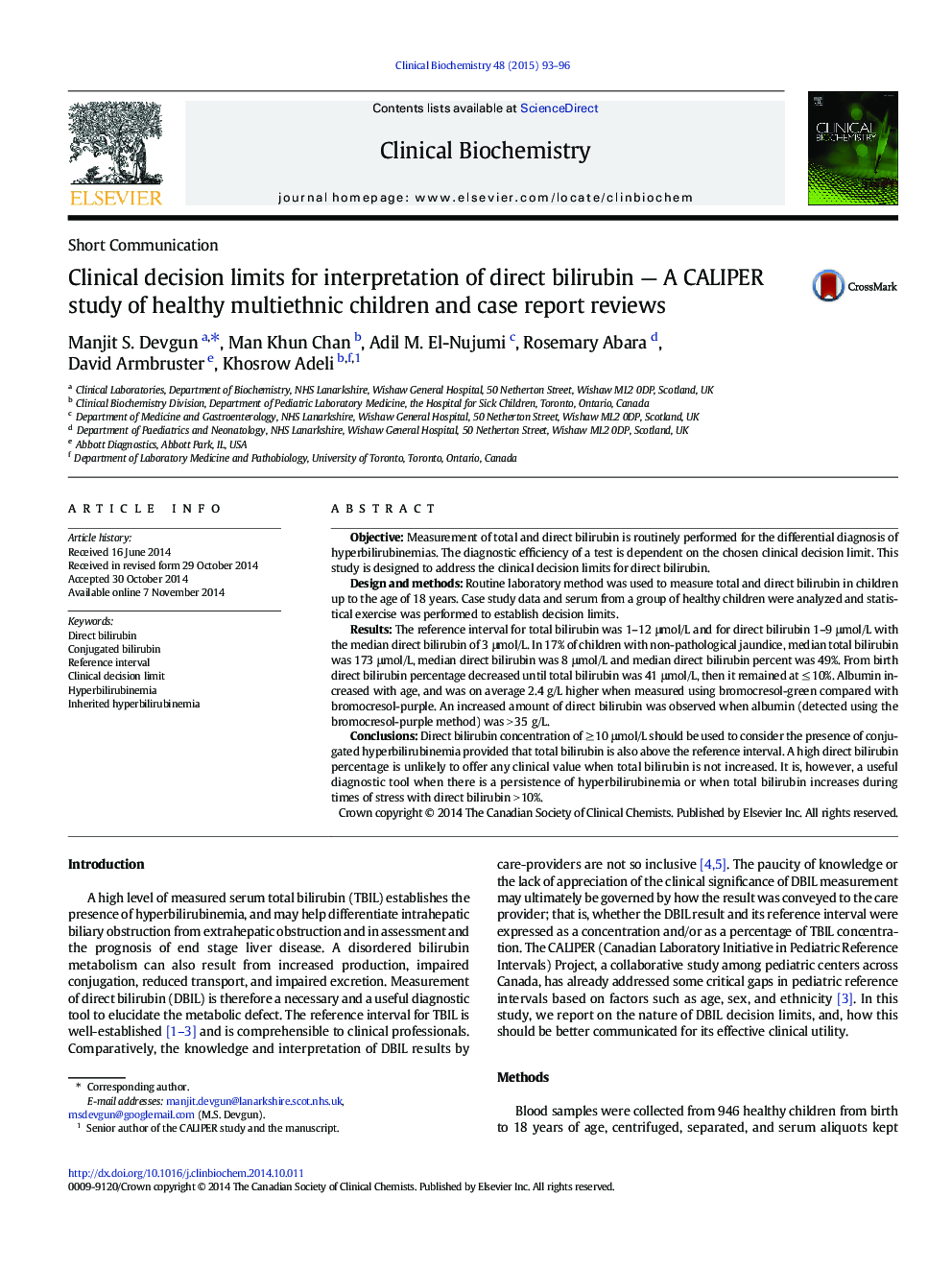| کد مقاله | کد نشریه | سال انتشار | مقاله انگلیسی | نسخه تمام متن |
|---|---|---|---|---|
| 1969060 | 1538870 | 2015 | 4 صفحه PDF | دانلود رایگان |
• In children median direct bilirubin was 3 μmol/L (range 1–9).
• In non-pathological jaundice, median direct bilirubin was 8 μmol/L.
• In all subjects, median direct bilirubin was 49% of total bilirubin.
• When total bilirubin is ≤ 12 μmol/L, direct bilirubin offers little clinical value.
• Direct bilirubin of ≥ 10 μmol/L (> 10% of total) is the clinical decision limit.
ObjectiveMeasurement of total and direct bilirubin is routinely performed for the differential diagnosis of hyperbilirubinemias. The diagnostic efficiency of a test is dependent on the chosen clinical decision limit. This study is designed to address the clinical decision limits for direct bilirubin.Design and methodsRoutine laboratory method was used to measure total and direct bilirubin in children up to the age of 18 years. Case study data and serum from a group of healthy children were analyzed and statistical exercise was performed to establish decision limits.ResultsThe reference interval for total bilirubin was 1–12 μmol/L and for direct bilirubin 1–9 μmol/L with the median direct bilirubin of 3 μmol/L. In 17% of children with non-pathological jaundice, median total bilirubin was 173 μmol/L, median direct bilirubin was 8 μmol/L and median direct bilirubin percent was 49%. From birth direct bilirubin percentage decreased until total bilirubin was 41 μmol/L, then it remained at ≤ 10%. Albumin increased with age, and was on average 2.4 g/L higher when measured using bromocresol-green compared with bromocresol-purple. An increased amount of direct bilirubin was observed when albumin (detected using the bromocresol-purple method) was > 35 g/L.ConclusionsDirect bilirubin concentration of ≥ 10 μmol/L should be used to consider the presence of conjugated hyperbilirubinemia provided that total bilirubin is also above the reference interval. A high direct bilirubin percentage is unlikely to offer any clinical value when total bilirubin is not increased. It is, however, a useful diagnostic tool when there is a persistence of hyperbilirubinemia or when total bilirubin increases during times of stress with direct bilirubin > 10%.
Figure optionsDownload as PowerPoint slide
Journal: Clinical Biochemistry - Volume 48, Issues 1–2, January 2015, Pages 93–96
